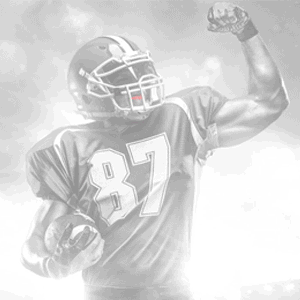Want Your Team To Be Atop The Leader Board? Follow The Leader!

 Good leadership is important. And that’s an understatement.
Good leadership is important. And that’s an understatement.
You likely don’t need to be told about the importance of leadership, but when it comes to your team, strong leadership may be the most essential factor for your championship hopes. And with your season getting underway, it’s time for the leaders on your team to start emerging.
But how do you identify those players? What constitutes good leadership? Is a good leader the best player on the team, or the guy that throws chairs at halftime? Let’s take a look at some of the key leadership components and ways for you to identify those players on your team:
Leaders Are Born, Not Chosen
In order to successfully execute your vision and plan for the upcoming season, your team needs to have strong leadership. And while you’ve likely named team captains by now, you can’t simply choose a leader.
Leaders aren’t chosen; they emerge naturally. But, if no leaders materialize among your players, you and your staff may run into issues later on. A team without a strong leader at its core is a team that isn’t going to go far.
That’s not to say your team needs just one player to step up. Some teams are able to get by with collective leadership. But that may make it more difficult in times of desperation, when your team is in need of the “strongest voice” in the room; someone to lead them through the fog.
Respect The Leader
Of course, don’t simply assume your best players are going to be the ones to step up and lead. Being a superior athlete or a prodigy on the field, court or ice doesn’t automatically make players leaders. Leadership comes by the example that is set, but that applies more to great character than it does to great skill.
Take Mike Eruzione for example. He may have only been a third line player on Team USA’s 1980 “Miracle on Ice” gold medal-winning squad, but he was the clear leader and a major reason why that team prevailed.
While leaders don’t necessarily need to be the best players on the team, they also don’t need to be the most popular either. In fact, it’s actually harder for the most popular players to lead, as they typically err on the side of popular opinion over something unpopular, even if it’s in the best interest of the team.
Leaders shouldn’t be afraid to voice their opinion, whether it makes others happy or not. Leaders must say what needs to be said and tell others what needs to be heard. And that typically makes them unpopular.
But remember: leaders must be respected, not win popularity contests.
Leaders Come In All Shapes
Everyone responds to motivation, direction and criticism differently, and when you lead an entire team, there is going to be varying levels of engagement. While you may not have the luxury to do so, try to identify different types of leaders on your squad.
Much like with coaching, some players respond to the quiet, lead-by-example types; others want a leader that comes equipped with big pregame speeches ready to pump up the team; while some other players need a chair-throwing-expletive-screaming-maniac to rally behind. It takes all kinds.
Try to accommodate all types, if possible. Though it really depends on the temperature of your team…
Follow Your Leaders
…which is why it’s so important to connect with your leaders and learn from them.
Your team’s leaders are your lifeline to your team. Understanding where they are mentally through the course of a game or a season is like keeping your finger on the pulse of your entire team.
As your leaders go, your team goes. And your leaders must be on the same page as you for there to be harmony in the locker room. Because when you’re not on the same page, that same locker room could turn to anarchy.
Leaders are born, not chosen. Who’s going to lead your team to victory this season?






